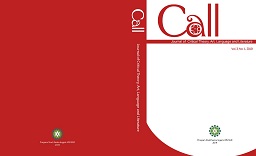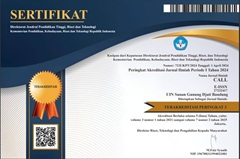The Kinds of Personality Disorders of The Main Character in Inside Out Movie Script
DOI:
https://doi.org/10.15575/call.v2i1.8763Abstract
Movie script is a narrative literary wok that has intrinsic elements in it, that the intrinsic elements are theme, setting, point of view, plot, moral value, and last but not least are character and characterization. Movie script that are visualized into movies are categorized as modern dramas. Nowdays, the movie is used as a medium of entertainment and as a medium for delivering messages. This research aims to find two things, that is the personality disorders experienced by the main character in “Inside Out†movie script by Pete Docter. In this research, the researcher uses Sigmun Freud’s psychoanalytic theory (1923), and assisted by other supporting theories. The result of the research found that there were eight types of personality disorders of ten types of personality disorders. This research uses DSM-V (2013) as a reference for discussion of personality disorders.
Keywords: Personality Disorder, Main Character, Inside Out Movie, Riley, Author, Dialogue, Narration.
Downloads
Published
Issue
Section
Citation Check
License
Authors who publish in CALL agree to the following terms:
- Authors retain copyright and grant the journal right of first publication with the work simultaneously licensed under Attribution-ShareAlike 4.0 International (CC BY-SA 4.0) License that allows others to share the work with an acknowledgment of the work's authorship and initial publication in this journal.
- Authors are able to enter into separate, additional contractual arrangements for the non-exclusive distribution of the journal's published version of the work (e.g., post it to an institutional repository or publish it in a book), with an acknowledgment of its initial publication in this journal.
- Authors are permitted and encouraged to post their work online (e.g., in institutional repositories or on their website) prior to and during the submission process, as it can lead to productive exchanges, as well as earlier and greater citation of published work (See The Effect of Open Access).




